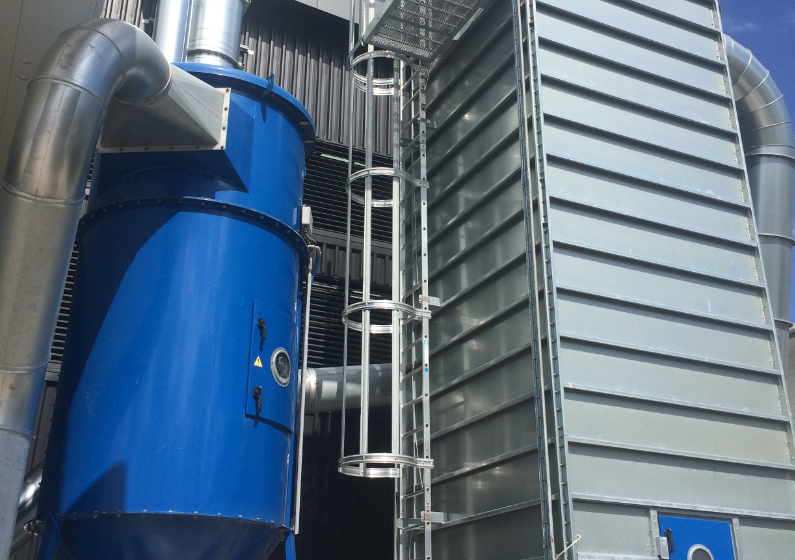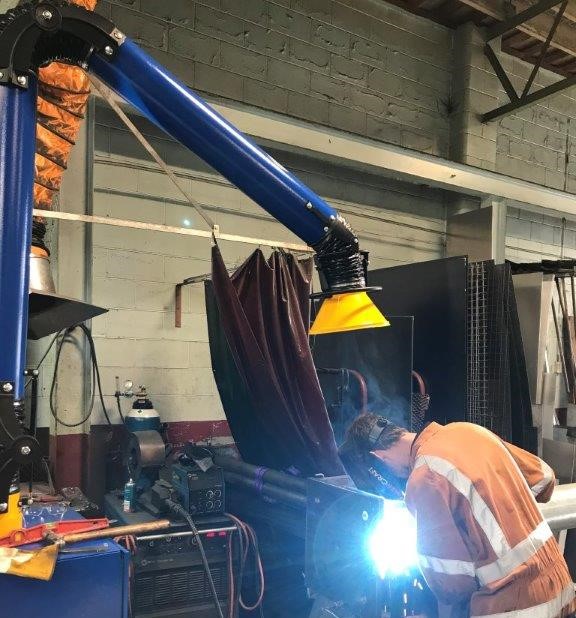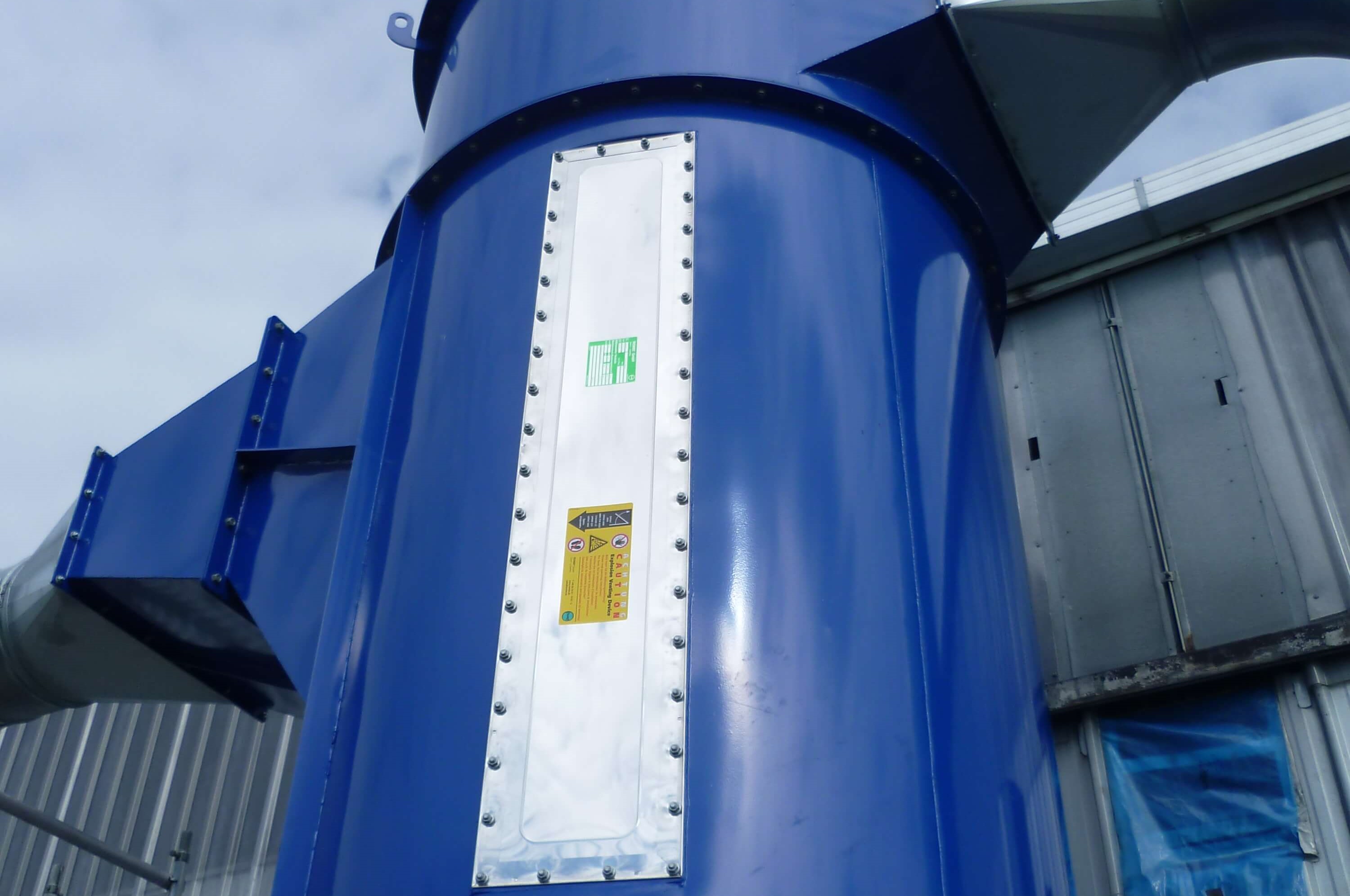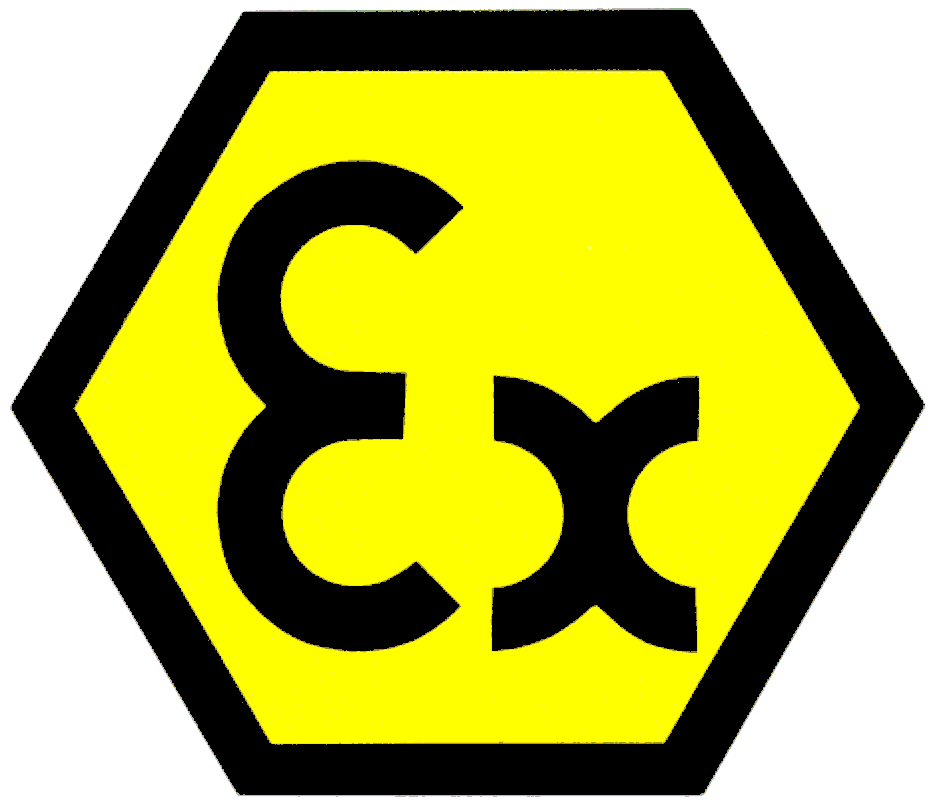
VFV Dust Filters: What It Means and Why It Matters
Ebcam Dust & Fume employees are in work places every day and see the dusty conditions that many staff are operating in, even when dust filtration systems have been installed. Dust settled on horizontal surfaces in a workplace means that the most harmful dust particles between 1-10microns, invisible to the eye, are also present, airborne and harming staff working in the area as well as possibly other nearby employees, not even associated with the work processes.
Good dust filtration systems improve air quality and minimise this dust exposure, however once captured, fine dust is still dangerous. Dust inside a dust extraction filter can explode with devastating consequences. Many currently installed dust collector filters are based on old ‘1950’s attitudes’ of just not worrying and hoping an explosion doesn’t occur.
Still very popular, (especially in wood processing environments), old dust collection systems work, if they have been well maintained, and an additional dust/air load has never been added with new machines.
In maybe 99.99% of cases, as more machines are added to production, the dust filtration becomes insufficient, flow rates drop allowing dust to settle in horizontal duct runs, waiting for a spark or heat source: an accident just waiting to happen. Even well-maintained dust filtration systems have been known to explode, at best seriously affecting production, possibly injuring staff, or worse, employees have been killed.
New technology is now available from European company JKF Industri in Denmark for dust filtration systems. The Danes are world leaders in dust extraction technology and offer advanced safety and energy saving features in dust collection filters.
One of these advancements is Vertical Flameless Venting (VFV™) which means that if a dust explosion occurs, the dust collector filter releases the pressure (shock) wave with NO FLAME OR FIREBALL which will occur on other dust collectors.
What are VFV™ Dust Filters?

A traditional dust collector filter is built with various panels held together with thousands of nuts and bolts, or it is welded. If a dust explosion were to occur, these panels and bolts become airborne, like shrapnel. A potentially lethal event. Welded units rupture and a wall of fire is released across the workplace and possibly carpark. To release this explosion safely, manufacturers fit sacrificial explosion membranes to release the explosion but maintain structural integrity.
However the fire ball often occurs, erupting from the side of the filter. These dust collector filters have been known to be situated pointing directly at glass windows, and even fire escape doorways! A well marked staff/equipment exclusion zone must be enforced within the danger range of these membranes.
Dust filtration with VFV™ ( Vertical Flameless Venting) release explosions with NO FLAME.
Only the pressure wave leaves the dust filtration unit and this is via a more safe route: vertically out of the roof. No fireball, no secondary explosions, negligible chance of injury to your staff, neighbours or anyone unfortunately in the vicinity when the filter blows. Only the area above the filter needs to be considered, so locate outside!
These ATEX approved, dust collectors which include explosion membranes, are now fitted into small, medium and large industrial workplaces in Australasia. Anywhere that safety is an issue. New Zealand, has started to specify units, specially designed in Denmark with low cost VFV™ into school dust collector systems.
Your staff are your most valuable asset. Protect them and your company. Specify your dust extraction system with VFV™
Features of VFV™ Dust Filters
VFV™ membranes are not something you can fit retrospectively or buy as an ‘add on’.
The entire dust collector units must be strong enough to contain the initial explosion and then designed to force it upwards through the dust collector, releasing safely to the sky.
There are dust collectors in the market that have changed little in 50 years. These are no longer sold in Europe for collecting potentially explosive dusts, yet they can be found here locally displaying stickers stating ‘ATEX Approved’.
If offered this technology, it would be reasonable for you to ask for copy of ATEX certification of that dust collector, with that ATEX part fitted, approved and tested, (preferably by a well-recognized independent test centre).
Normally the supplier will also have video records of the tests, if this is in fact a genuine case.
You can improve your workplace safety for your staff by considering a dust filtration system that will cost little more or possibly even less than a standard dust collector filter depending on the size of your operation. Call us to discuss improving air quality for your staff using a safe effective dust filtration system that incorporates the latest and best technology currently available in the world !





